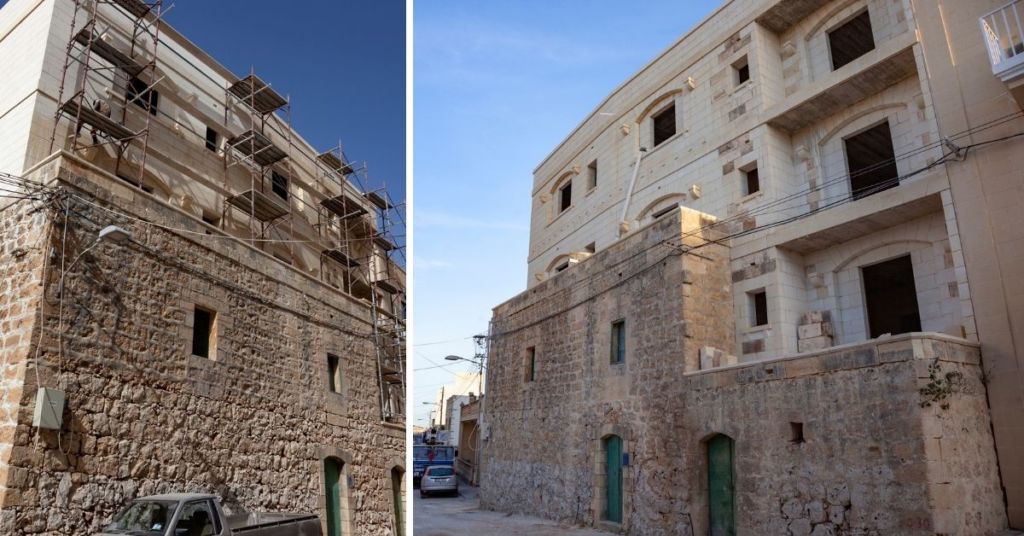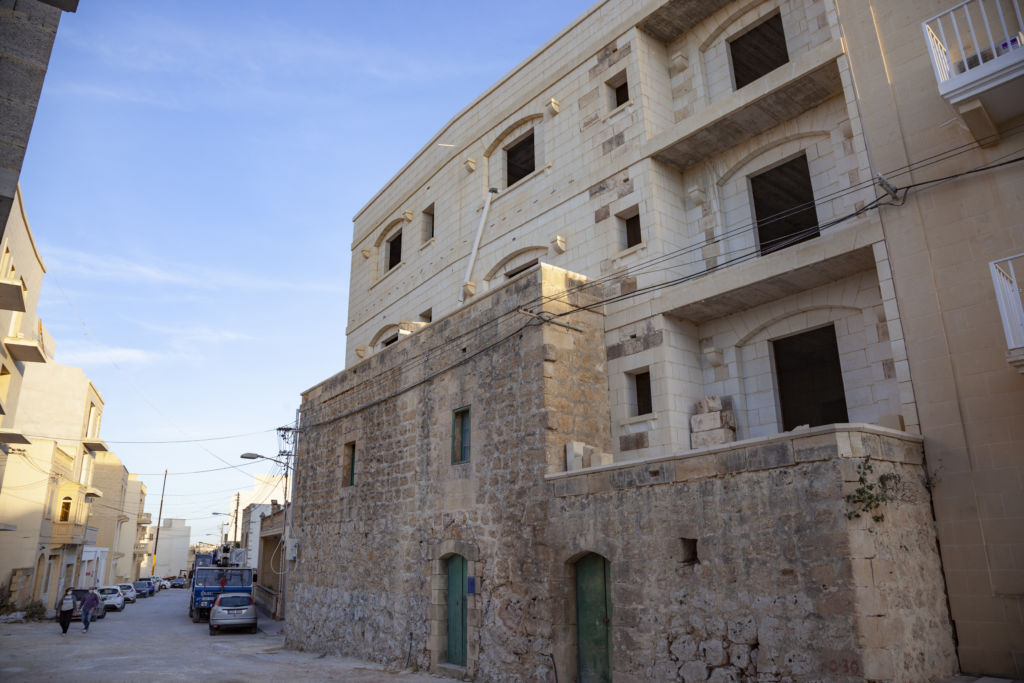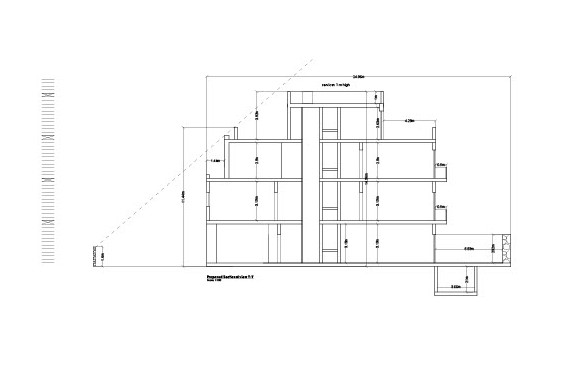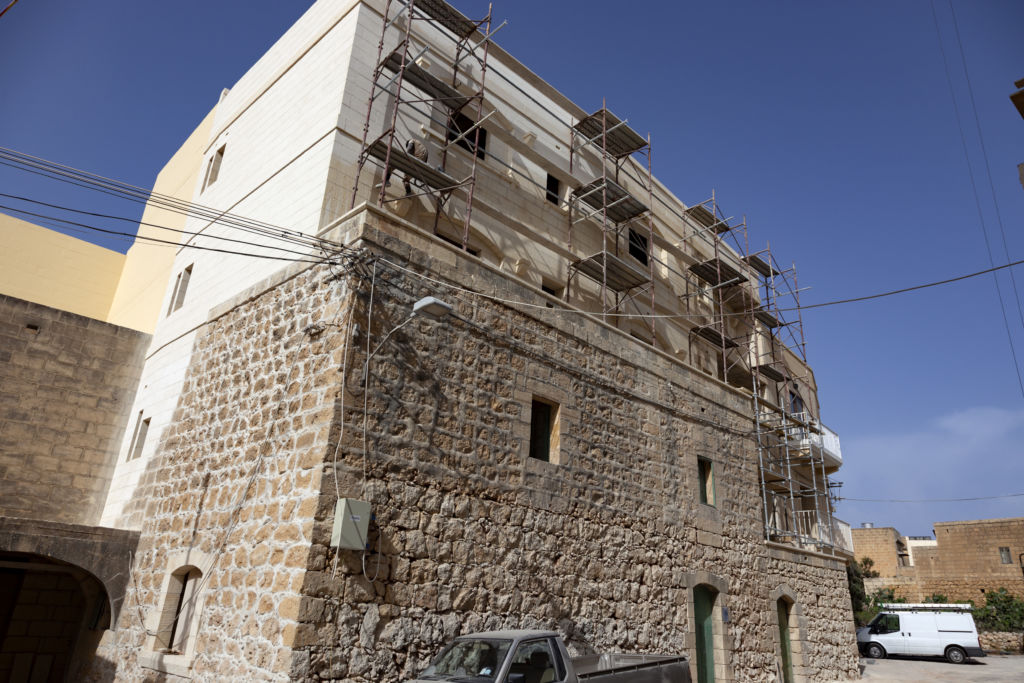Three Successive Permits For Outgrowth Building That Swallowed Gozitan Farmhouse

A couple of hundreds year-old farmhouse that had to be preserved due to its “evident vernacular value” – it was even allowed to jut out into the street – has instead been subsumed by a towering four-storey building developed incrementally, thanks to three successive development permits granted by the Planning Authority.
The cumulative effect of the three permits makes a mockery of the conditions imposed by the Superintendence of Cultural Heritage.
The three development applications were submitted by two separate individuals for “three houses” in the words of the architect, but the now-complete looming façade has the appearance of a single unified building.

The architect, Alex Bigeni, is a prolific architect in Gozo and designer of various controversial projects, including projects by property developer Joseph Portelli. Alex’s brother, Damian, was an advisor to Gozo Minister Clint Camilleri.
The farmhouse is situated at Ta Karkar Street, where a 200-metre stretch of street is being rapidly transformed from a street holding a scatter of townhouses to a street hemmed in by five-storey blocks of flats.
The Planning Authority granted 12 development permits in 2019 and 2020 that together hold 80 flats – that excludes the three permits that allowed the oversized outgrowth over the old farmhouse

The farmhouse was bought by James Vella, cousin of the architect Alex Bigeni, and Victor Xerri, a developer, in August of 2016.
Three months later, Vella submitted an application for additional constructions on a part of the farmhouse “to form two residential units”.
Seven months afterwards Xerri then applied to add two floors on the other part of the farmhouse.
The Superintendence of Cultural Heritage wrote to the Planning Authority that the farmhouse is situated in an area of “archaeological sensitivity” (the Neolithic temples of Ggantija are a couple of hundred metres away) and holds “evident vernacular value”. It added that all features, including “underground cisterns and water management systems”, had to be “preserved and integrated.”
The Superintendence then specified that it “does not object to the proposed development application [by Xerri] on condition that”, among others, the additions would not “jeopardise the structural integrity of the vernacular building” and that “any increase in height and volumes is to be in keeping with the context and with relevant planning policies and guidelines for the zone.”

The Planning Authority granted permits to both applicants.
Vella then applied for a second permit in 2020 to “add another floor on top of two terraced houses [already] approved”.
The permit was granted within weeks under the so-called summary procedure, a desk exercise by the case officer without going to the board. The case officer report granting the permit is bald for such an underlying structure deserved of protection – there is no mention of the vernacular building, neither the conditions of the Superintendence.
This third permit unified the façade.
Asked whether these development applications in stages were intended to mislead the Planning Authority, the architect Alex Bigeni said: “The applicant changed his mind during construction and wanted to add an additional floor and carry out changes. I don’t see anything wrong with this.”
He also indicated that the two applications did not apply at the same time initially because of “issues related to third parties next door.”

The now-complete façade appears to reveal a breach of permit: architectural drawings attached to the permit of one of the applications show a recessed top floor, but the top floor is not recessed in the finished structure.
The complete façade, comprising the development of Vella and Xerri, also looks like a unitary, single development with decorative bands running across the entire façade. Other decorative features found throughout the façade also give the impression that it’s a single building. Plasterers were even seen plastering the façade in one go last month, as though working for one client.
Seen from the street, there is nothing on the façade that shows distinct houses – Bigeni in his answer said that the building consists of “three houses.” The architectural drawings do show three houses, each set on four floors, and oddly large by today’s standards – the architectural drawings show that one of them has seven bedrooms, while the other two have six bedrooms each.
What do you think of the development?
